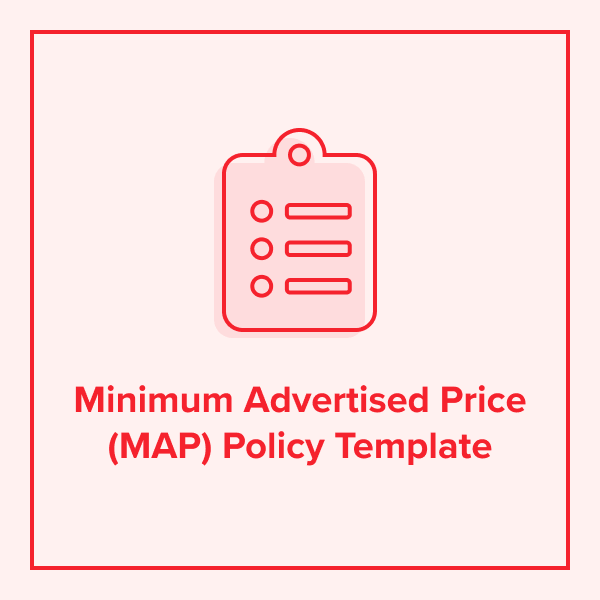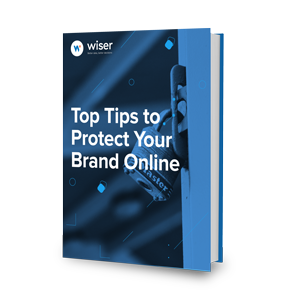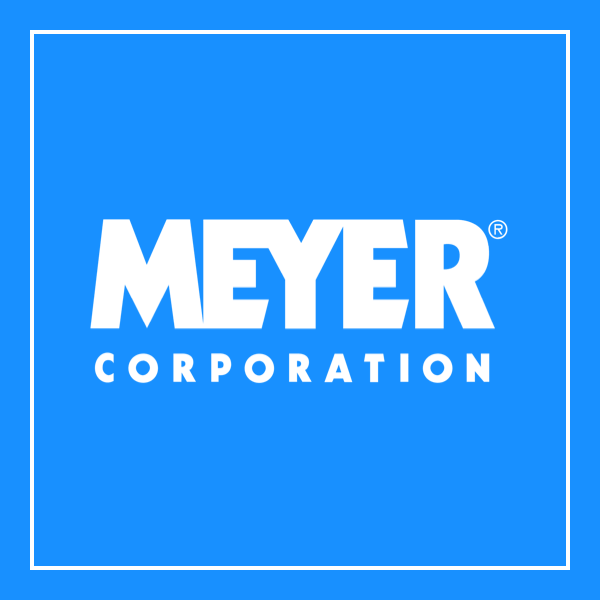Brand Management: How to Create a MAP Policy, Implement MAP Monitoring, and Protect Your Brand
The retail industry is shifting. Are you ready?
Online retail is a force. Brick-and-mortar is alive and well but evolving. New technology is changing how we shop, order, pay, and receive. What shoppers want changes by the day. Your business must be prepared to adapt to what comes next.
Odds are, this environment has you thinking about pricing a lot. Are my prices competitive? Is my margin big enough? Are my retailers correctly pricing my products?
If you are thinking about pricing, then consider these BigCommerce statistics:
Price is one of the top three reasons why shoppers buy from a branded online store, alongside convenience and free shipping.
Price and convenience are the top two reasons why people buy from Amazon.
Gen Z and Millennials are more likely to return a product because they found a cheaper alternative compared to Gen X and Baby Boomers.
Overall, BigCommerce found that 87 percent of Americans cite price as the biggest factor behind online purchases, and the Nielsen Global Connected Commerce survey reported that 52 percent of online shoppers compare prices before buying while 46 percent search for deals or coupons.
It’s only natural that, given how important price is to consumers, that retailers fight for competitive pricing. But what can brands and manufacturers do when retailers drop prices? The answer is a solution such as minimum advertised price policies
Read along to learn everything you need to know to begin a MAP policy, from creation and implementation through enforcement.
What is MAP Pricing?
A minimum advertised price policy, or MAP policy, is a pricing agreement between a manufacturer or brand and its resellers to not advertise the price of a specific product below a predetermined price. MAP pricing is not legally binding, but rather a mutually beneficial agreement to price products at or above a set price.
The key word is advertised—retailers can sell products below MAP, but not advertise those prices.


Nike Develops a Holistic Approach to Its MAP Policy With Wiser Solutions Pricing & MAP Intel


Leading Cookware Manufacturer Meyer Corporation Decreases MAP Violations with Automated Monitoring at Scale
The Benefits of Minimum Advertised Price Policies
Why should you care about minimum advertised price policies? The answer is because the current state of retail requires it of you.
A significant number of third-party marketplaces now exist online. As a brand and/or manufacturer, your products are likely sold across a wide variety of channels—not all authorized or reputable. It’s easier than ever before for unknown parties to buy your products and resell them online. They can charge whatever they want, as they are not part of a formal distribution channel. Plus, the existence of easy-to-use comparison-shopping sites means your authorized vendors’ prices will be listed alongside gray-market ones, and your customers won’t know the difference.
MAP policies address this reality. A strong policy can:
- Prevent brand erosion
- Protect your sales at major, authorized retail partners
- Discourage price wars between those retail partners
- And much more!
So, how can you take minimum advertised pricing and turn it into a valuable pricing policy for your business? With MAP monitoring.
What Are Minimum Advertised Price Policies?
- Agreement between brand or manufacturer with authorized vendors.
- Agreement is to price a SKU at or above a specified minimum price.
- The agreement is not legally binding.
- Retailers can still sell a product at a below-MAP price, just not advertise it.
What is MAP Monitoring
MAP monitoring is the routine process of reviewing the prices of your online retailers across all marketplaces to identify MAP compliance. Your focus should shift to MAP monitoring once you have an established MAP policy.
Like with MAP pricing as a whole, the act of monitoring provides unique benefits to your business.
The Value of MAP Monitoring
Brands and manufacturers that regularly monitor their online retailers for MAP compliance are in a much better position to protect their reputations and margins than those who don’t.
MAP monitoring is beneficial because it will show you each of your product’s prices, who is selling that product, and where that product is being sold. This information is incredibly valuable. Once in your hands, you can determine if those resellers are authorized by you or not. You can contact any noncompliant or unauthorized seller and request corrective action—in some cases, even turning unauthorized sellers into authorized ones.
Furthermore, MAP monitoring should also be encouraged by your authorized sellers. Given that unauthorized sellers are more likely to price too low—contributing to price wars—authorized partners would have to follow suit and drop prices as well.
Online price wars affect brick-and-mortar channels as well. When a B&M retailer sees your products available at an online competitor for less money, they will try to negotiate lower pricing with your brand. This can, in turn, hurt your margins and revenue. Catching MAP violators early and often will decrease the odds of these scenarios occurring.
Overall, MAP monitoring allows you to track how effective your distribution partners are at maintaining your brand, and your brand’s price perception is everything.
How to Create MAP Policies
Eager to get started? Here are six tips to create a MAP policy:
Research the Competition
Begin by looking at your competitors’ prices. Many of the rules you used when creating general pricing strategies will apply here. You may want your minimum advertised price to be relatively close to your competition, as too high or too low will affect sales.
Understand Your Brand Positioning
Next, you need to firmly understand how your brand is positioned in the marketplace. Not everyone can be Apple or Amazon, two brands that have the reputation and loyal following to pretty much charge whatever they want for their products. Is your brand mid-sized? A start-up? A well-established brand? Take note of how your consumers reacted to previous price changes and how those changes affected overall sales.
Decide on Your Margins
Then, you need to identify which margins are needed for which products in order to remain profitable and hit your financial objectives. Protecting your margins is a core outcome of MAP pricing, as the minimum advertised price must be the lowest possible price you’re comfortable with before margin degradation occurs.
Draft a MAP Template
Once these steps are complete, you can then draft the language you will use to communicate MAP policies across your reseller network. Don’t grab generic MAP templates from the internet; create something custom. Policies you find online may include language or legal terminology not relevant to your business. Instead, create your own. Include language that outlines the minimum advertised price desired and the punishment for violating MAP—often an inventory reduction to that specific retailer.
Consult with Your Legal Team
Once you have a template created, you must consult with your legal team to ensure your MAP policy is legal. Complaints that can be levied against you include price fixing and other antitrust violations. A MAP policy must be non-legally binding, which means you don’t have legal recourse against violators. Instead, you can reduce supply or cease distribution altogether for violations.
Consistently Enforce MAP Across Resellers
Finally, you can roll out MAP policies to your reseller network. The important part is that you’re enforcing MAP consistently, and not granting favors or looking the other way for one retailer while cracking down on another. If retailers see this happening, they’ll know your MAP policy isn’t taken seriously—or worse, lodge a price-fixing complaint with regulators.
Get Started with MAP Enforcement
Implementing a MAP policy does not equal MAP enforcement. You will need to take that extra step to ensure your policies are respected, followed, and beneficial.
On the contrary, if you let your policy be violated and ignored you will see authorized sellers not willing to pay as much for your products because they can’t compete with the sellers breaking your MAP pricing. Therefore, you’ll start losing margin and revenue.
Instead, here are five tactics you can use to enforce MAP pricing.
Issue a Warning
First violations of MAP should typically be followed by a warning. Use this opportunity to communicate with the seller and discover why MAP was violated. The reasons could shed light on issues with your existing pricing policies or concerns from the retailer, and first-time violations may be better served with a warning than any punitive recourse.
Place a Hold on Shipping
Future MAP violations from retailers can result in more severe punishment. One step you can quickly take is to place a temporary hold on shipping key products after the violation is found. This restriction on supply, especially if the product is a top performer, will clearly state the seriousness of a MAP violation.
Reduce Your Assortment with Retailer
Any additional MAP violations from the same retailer will require more drastic action. Instead of a temporary hold on shipping, permanently reduce your assortment with that seller. Pull products from their virtual shelves, removing more SKUs for repeat violations.
Convert Unauthorized Sellers
Unauthorized sellers require a different approach compared to authorized sellers. If you identify a MAP violation attributed to a seller you don’t recognize, you must first uncover the seller’s information and contact them. Find out who they are, why they are selling your product—better yet, where they got it from—and notify them of your MAP policy.
The best-case scenario is that the seller is legitimate, just unauthorized, and you convert them into a member of your reseller network. Worst case, they are counterfeiters or sell stolen goods, and you need to take legal action.
Revoke Authorized Seller Status
Finally, any chronic violators can be dealt with by ending your partnership altogether. This is a viable option for the repeat offenders who have not responded to earlier enforcement steps. At this stage, you’ll want to end all distribution to that retailer and agree internally to not partner with them for the foreseeable future.
What is Brand Protection?
Picture this: a potential customer goes online to look up one of your products. While scrolling through results, they come across a version of your product that looks the same, says it does the same things, but it's much much cheaper. That's because it's a fake!
Fake sellers and websites are unfortunately a common issue for a lot of brands. This is a problem that can lead to a myriad of unfortunate consequences, like lost revenue and a negative impact on your brand image. Dealing with counterfeit sellers and faulty products would frustrate anyone, and consumers won't always know that they've been dealing with an unauthorized seller.
And it's not just fake products you have to worry about, there's other brand protection issues to look out for—data breaches, fake social media accounts, and business phishing scams to name a few.
That's why it's in your best interest to invest in protecting your brand.
Brand Protection Definition
Brand protection is the protection of a brand's intellectual property. It works to identify and stop counterfeiters and unauthorized sellers from stealing or selling items such as designs, products, patents, trademarks, etc.
Brand protection is necessary to prevent loss of revenue and ensure that a brand's reputation remains untarnished.
Finding Your Brand Protection Software
Choosing the right brand protection software provider can be difficult. Here are some things to consider when making your decision:
Versatility
The right brand protection software will cater uniquely to your brand, allowing you to prevent and protect against your specific issues. Make sure that the software provider you choose is experienced in your problem areas so there are no mishaps.
Usability
A good brand protection tool should also be user-friendly. You don't want to have to go through a whole training procedure each time somebody new needs to use it.
There will likely be multiple people from different parts of your company who will all need access to this tool, so you want anyone to be able to jump in and use it seamlessly. The information should be organized and laid out intuitively so there's no confusion about the information you're seeing.
Organization
Ideally, the right brand protection software will be organized logically and allow you to view your data in the most efficient ways possible.
Top offenders should always be at the top of the list so that your biggest problems can be addressed and dealt with ASAP. You don't want to leave the issues with the biggest consequences to fester, and organized data makes it quick and easy to set your priorities.
Support
Even with excellently laid out brand protection software, you will likely still run into issues that require some customer support. You need to be able to reach out to and ask questions whenever issues may come up.
The right tool will come with expert-level guidance and support whenever you need it.
Enforcement
The end goal of all your brand protection plans should be enforcement. You can't just set the rules, you need to make sure your sellers are following them.
You need fewer counterfeiters, fewer phishing scams, and less negative impact on your brand. That's why it's important to choose a software provider that values enforcement at the forefront of their brand protection plan.
Conclusion
Are my prices competitive? Is my margin big enough? Are my retailers correctly pricing my products? With MAP pricing, the answer is yes, yes, and yes.
Wiser Solutions’ MAP monitoring service connects brands and manufacturers with an automated, intuitive MAP platform to:
- Monitor reseller pricing
- Identify MAP violations in near real-time
- Uncover unauthorized seller information
- Acquire the intelligence needed to take corrective action
- Replace manual monitoring and spreadsheets
With Wiser, you will know who is selling your products, if they’re authorized to do so, how those products are priced, and if your distribution partners are MAP compliant. All information is shared via a configurable online dashboard, so you have immediate, easy access to your MAP data. Within that dashboard you will have screenshots of each violation and the ability to manage email communications with resellers directly inside the application.
Why upgrade your MAP monitoring with Wiser? Because your brand’s reputation—and your margins—won't wait. Don’t let resellers’ low prices affect your price perception and eat away at your profits. We’re ready to discuss how we can customize Wiser’s MAP service to your exact specifications.
Actionable insights are a conversation away.
We’d love to give you immediate access to our Commerce Execution Suite, but first we need some information. Help us learn about your business so we can recommend an ideal solution.